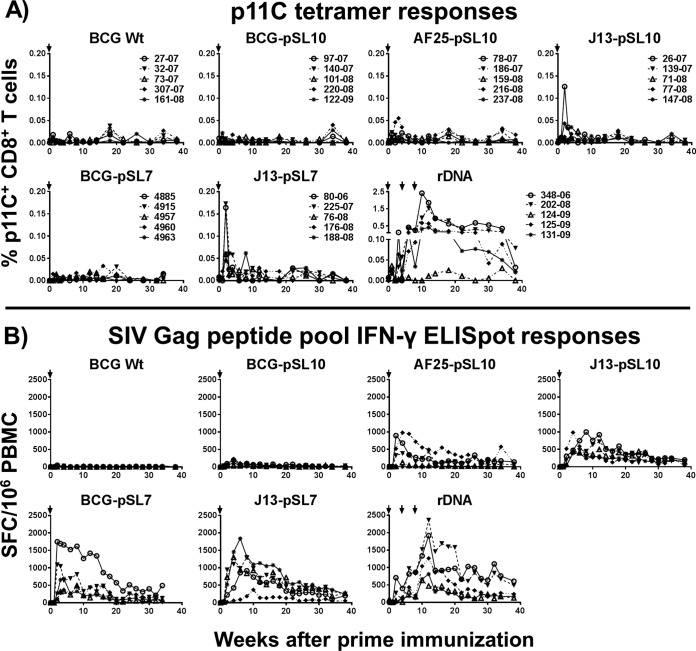FIG 2.
Primary immunization with rBCG vectors elicits detectable SIV Gag-specific immune responses. (A) Monkeys in the groups immunized with mutant rBCG-SIVgag developed measurable (>0.05%) peak p11C epitope-specific tetramer responses around weeks 2 to 3 after priming immunization (i.e., 1 NHP in AF25-pSL10 group, 1 in J13-pSL10, and 4 in J13-pSL7; in comparison, there were 4 NHP with strong responses in the rDNA group after 3 immunizations). Kruskal-Wallis test (week 2 postprime), P = 0.003; Dunn's multiple-comparison posttest (significant differences), P = 0.03 (BCG Wt versus J13-pSL7) and P = 0.02 (BCG-pSL10 versus J13-pSL7); Mann-Whitney test, P = 0.008 (BCG-pSL7 versus J13-pSL7). (B) Following priming immunization with parental BCG-pSL7-SIVgag or mutant rBCG constructs, NHP developed robust IFN-γ ELISpot responses upon SIV Gag peptide pool stimulation that were similar to the magnitude of immune responses generated after 3 rDNA vaccinations. IFN-γ ELISpot responses were low or undetectable after immunization with BCG-pSL10 or BCG Wt (total n = 35 [n = 5 in each group]). Kruskal-Wallis test (week 4 postprime), P = 0.003; Dunn's multiple-comparison test (significant differences), P = 0.03 (BCG Wt versus J13-pSL10), P = 0.02 (BCG Wt versus BCG-pSL7), and P = 0.02 (BCG Wt versus J13-pSL7). Arrows indicate immunization time points. Lines connect responses from individual animals over the time course of the study.

